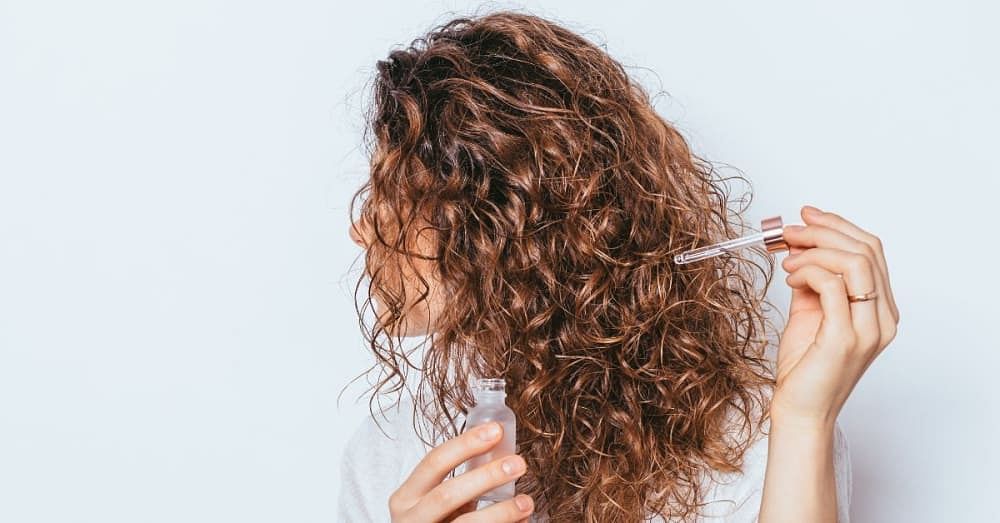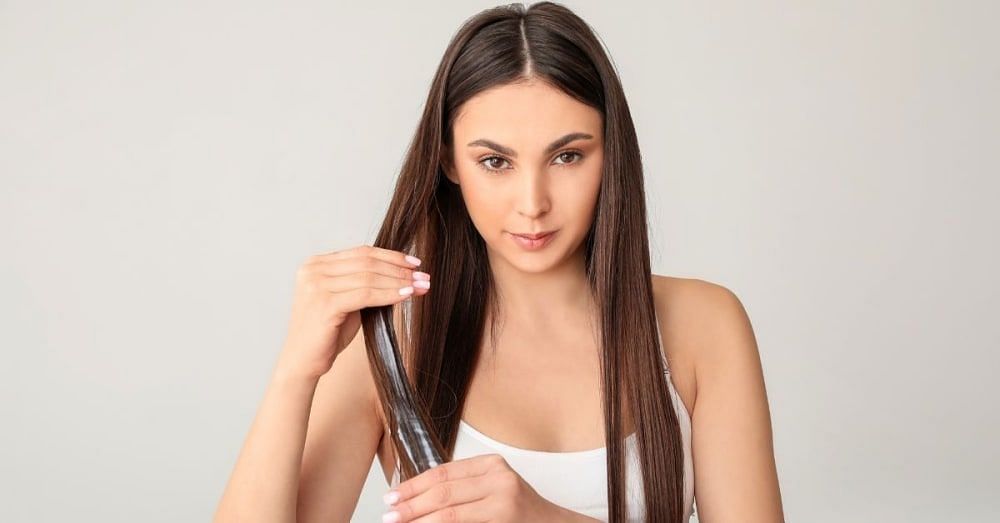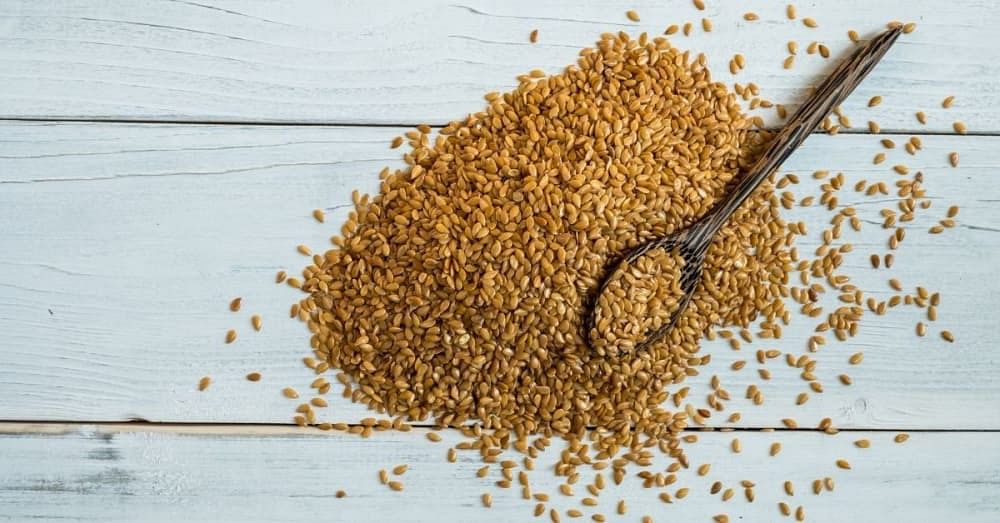A full head of thick hair is frequently associated with good looks and health. However, a variety of internal and external variables might have an impact on hair health. As a result, you must be aware of the factors contributing to hair loss and take the necessary steps to maintain your ideal hair volume. This article examines the various elements that affect hair volume and multiple home remedies and self-care practices that can be used to boost hair volume.
What is Hair Volume?
Hair volume is determined by the number and density of hair follicles that sprout every square inch on the hair surface. It is commonly thought of as the quantity of hair rising at the root, the appearance of fullness, and the thickness of the hair.
On average, our scalp has 80,000 to 120,000 hair strands. The hair volume is usually most substantial at the vertex, also referred to as the crown, located at the head's height.
Factors Affecting Hair Volume
An average person's scalp has 2,200 strands per square inch. Several things may alter this figure, including:
1. Genes
Hair quality is primarily determined by one's genetic composition. Hair loss conditions such as male-pattern or female-pattern baldness are usually caused by genetic predisposition. Moreover, genetics may also result in having fewer hair follicles and thinner hair.
2. Chemical exposure
Using cosmetics that contain chemicals like parabens, sulphates, formaldehyde, and isopropyl alcohol can cause hair to become thin and brittle. Similarly, the chemicals used in keratin treatment, hair dyes, and hair bleaching might contribute to hair loss.
3. Medical Problems
Thyroid issues, anaemia, and allergies can contribute to telogen effluvium or hair loss.
4. Stress
Hair thinning is caused by various factors, including stress and mental disturbance. Stress can harm the hair directly or negatively affect the immune system and hormone levels.
5. Hormonal Changes
Regardless of gender, it's usual to see a decrease in hair volume when undergoing hormonal changes. Hormone-related hair loss is more common in women with polycystic ovarian disorder (PCOD), a condition in which an excess of testosterone causes hair to become brittle and thin, resulting in reduced hair volume.
6. Improper Diet
A lack of sufficient nutrition or a nutritional deficiency can harm the hair follicles, causing hair loss and slowing hair development.
7. Ageing
As catabolism rises and skin cells and building abilities decline, reduced hair volume is a common side effect of ageing.
8. Excessive Styling
Hair damage can be caused by extreme heat damage, not shampooing or yanking the hair.
9. Pollution
Environmental contaminants are very vulnerable to the hair, and excessive exposure can contribute to poor hair health.
How to Measure and Increase Hair Volume?
1. Ocular Check
An ocular check is a much more practical technique to acquire a basic notion of the hair volume at home. The hair volume is probably in the bottom range if one can view the scalp before moving the hair. The density is usually somewhere within the centre if one has to adjust the hair slightly to show your scalp. The hair thickness is undoubtedly significant if it's tough to view the scalp.
2. Ponytail Check
The ponytail check is yet another prominent web test. The test works by putting the hair up in a bun and then calculating the circumference. This test might give you an indication of your hair volume, but the density of each of your hair strands also plays a factor in the width of your ponytail. Of course, you'll only be able to do this if your hair is long enough to tie in a ponytail.
3. Volscian Profiler
Utilising the Volscian Profiler to assess the hair structure entails dynamic analysis, sample movement, and laser measurement. This instrument can also perform a wide range of digital volumetric measurements in a short amount of time.
Volscian Profiler is a solid laser-based benchtop equipment used to measure the volume and dimensional profiles of mannequins' heads and hair weaves. These metrics enable the equipment to generate a quantitative assessment of hair volume, frizziness and curl retention, which is essential in product creation and performance evaluation.
During the scanning process, the Volscian Profiler can spin the sample at a predetermined rate, allowing the braid to curl. A vertical oscillating laser is utilised to trace the outlines of the spread hair tresses while this movement is taking place. The resulting 3D scan is subjected to a series of calculations, revealing volume and frizziness measurements and allowing an evaluation of the influence of conditioning or any additional treatments.
How to Increase Hair Volume?
Regular hair care, as well as various homemade treatments, can help to increase hair density in most cases. If self-care techniques fail or one has a health condition which causes hair loss and weakening, the person may need medical attention.
Medical methods
- Minoxidil- It is the only FDA-approved medication that promotes hair growth. It comes as a topical lotion that you apply to your scalp.
- Finasteride and dutasteride- These medicines are routinely prescribed to people who suffer from androgenetic alopecia.
- Plasma therapy- The patient's blood plasma is infused into the scalp to improve hair health.
- Mesotherapy- Nutrients are administered into the hairline mesoderm, allowing the hair follicle to absorb more nutrients, resulting in increased hair growth.
- Laser Treatment- The hair follicles are stimulated with low-level lasers.
- Hair transplantation- TThis procedure involves transplanting a patch of skin containing hair and hair follicles from any region of the body to the head.
Natural Methods
- Usage of Herbs - In Ayurveda, many plants have been utilised based on anecdotal evidence to enhance thicker hair. However, only some scientific studies back up the claims.
- Usage of Essential Oils -Essential oils have been shown in studies to promote hair growth and density. However, more clinical trials are needed to confirm these findings.
- Caffeine Rinse - Caffeine may promote hair growth by prolonging the hair cycle's anagen and growth stage. Hair growth, as well as thickness, can be increased as a result of this.
How to increase Hair Thickness
1. Stick to an Ayurvedic hair care regimen
If you've spent a lot of time figuring out how to grow thicker hair, try an Ayurvedic hair care routine. Ayurveda can treat the underlying cause of hair issues and offer a natural remedy to the problem. As a result, if you want naturally thick hair, you should attempt some of the ayurvedic hair care regimens.
2. Herbal Masks for the Hair
Using a herbal hair mask, you can hydrate your hair strands deeply from the roots to the tips. The influence of such masks penetrates to a proper depth into your scalp, assisting in the thickening and restoration of your hair's natural shine.
3. Maintain A Healthy Diet
A well-balanced and nutritious diet aids in the regulation of cellular metabolism in the stem cells of your hair follicles. As a result, you should nourish your hair with nutrient-rich foods to promote hair development and make it stronger and thicker.
Hare Care Measures to Increase Hair Volume
1. Hot towel soak
A castor oil hair massage is essential before applying shampoo and conditioner. If possible, leave it overnight. Take a towel and soak it in hot water before entering the shower. With the towel, make a turban. The steam treatment will help to seal in the hair's natural oils. This method will help you revitalise your hair right away.
2. When blow-drying your hair, turn it upside down
You won't obtain bouncy hair if you blow-dry your hair the traditional way. Instead, the best no-product method for seeing immediate results is to blow-dry your hair upside down.
3. Use Aloe vera
When utilised correctly, it can be highly beneficial. For example, Aloe vera is a natural cure for preventing hair loss. It moisturises and nourishes your scalp, resulting in increased hair growth. Apply aloe vera gel to your scalp and leave it on for one hour. After that, shampoo your hair to get rid of it. Hair fall will be significantly reduced if you use this regularly.
4. Amla - the good 'old' fruit
Using amla, you can improve the volume of your hair. Amla has long been used as a herbal cure for various hair issues. It does everything from preventing grey hair to stimulating hair growth. Include one amla in your daily diet. To obtain the best benefits, eat it on an empty stomach.
Tips to increase hair volume and density:
Natural agents are readily available, simple to apply, and can help you enhance your hair's volume, thickness, and density. Conduct a patch test first to ensure you are not allergic or sensitive to any substances.
1. Consider Using Essential Oils
Essential oils like peppermint oil, geranium oil, lavender oil, ginseng, bhringraj, shikakai, rosemary oil, etc., can be mixed with a carrier oil and used to massage the scalp. However, more clinical trials are needed to confirm these findings.
2. Use Herbs and Plant-based Products
According to Ayurveda, certain herbs can assist you in increasing the volume of your hair. These herbs, including bhringraj, hibiscus, amla, reetha, green tea, tea tree oil, fenugreek etc., work miraculously.
3. Rinse Your Hair With Coffee
Caffeine may promote hair growth by prolonging the hair cycle's anagen or growth phase. Hair length and thickness can be increased as a result of this.
4. Toss in Some Onion Juice
Hair growth can be encouraged by the application of onion juice. Onion juice has been demonstrated to increase hair development, and is also beneficial in treating alopecia.
5. Use Indian Gooseberry or Amla
The Indian gooseberry, often known as amla, is a popular hair-care ingredient. Indian gooseberry has been demonstrated to help enhance hair volume in anecdotal evidence and scientific investigations.
6. Egg Mask
Another common natural item for promoting hair health is eggs. The peptide within egg yolks is thought to aid hair growth. However, this characteristic of eggs is supported by minimal scientific evidence and should be tested further.
Summing Up on How to Increase Hair Volume
Following a healthy and effective hair care program can have long and thick hair in just a few months. Avoid using chemicals on your hair and scalp, and go for traditional hair thickening treatments. While natural methods for developing thick hair may not show immediate effects, they promote the long-term health of the hair follicle.
FAQs
Does Shaving Increase Hair Density?
Despite scientific proof of the opposite, this is a misconception. Shaving has no influence on new hair regrowth and therefore has no bearing on the texture or density of the hair. Hair density refers to how tightly hair strands are packed together.
Can Thin Hair Become Thick Again Naturally?
The thickness of one’s follicles cannot be altered as it is genetic. Nonetheless, there are techniques to keep hair healthy, increase volume, prevent it from becoming thinner, and restore its thickness if it has become thin.
How Many Times Should I Oil My Hair in a Week?
Oiling hair can help nourish it, shield it from heat damage, and promote growth. So, to address the concern of how often one should oil one’s hair, it is recommended to do so at least once a week and a maximum of twice a week. Curly hair, in particular, can benefit from oiling because curly filaments are so much more vulnerable to becoming dry.
References
Rachita Dhurat, MS Sukesh, January 2013; A Randomized Evaluator Blinded Study of Effect of Microneedling in Androgenetic Alopecia: A Pilot Study - https://www.ncbi.nlm.nih.gov/pmc/articles/PMC3746236/
Pushpendra Kumar Jain, November 2015; Evaluating hair growth potential of some traditional herbs - https://www.researchgate.net/publication/301601784
R. Sinclair, M. Patel, December 2011; Hair loss in women: medical and cosmetic approaches to increase scalp hair fullness - https://onlinelibrary.wiley.com/doi/full/10.1111/j.1365-2133.2011.10630.x
Taro Koyama, January 2016; Standardized Scalp Massage Results in Increased Hair Thickness by Inducing Stretching Forces to Dermal Papilla Cells in the Subcutaneous Tissue - https://www.ncbi.nlm.nih.gov/pmc/articles/PMC4740347/
Hair Loss: Should I Take Medicine to Regrow Hair? - https://www.uofmhealth.org/health-library/tr2559
Zuzanna Sabina Goluch-Koniuszy, March 2016; Nutrition of women with hair loss problem during the period of menopause - https://www.ncbi.nlm.nih.gov/pmc/articles/PMC4828511/
Maria Fernanda Reis Gavazzoni Dias, March 2015; Hair Cosmetics: An Overview - https://www.ncbi.nlm.nih.gov/pmc/articles/PMC4387693/











